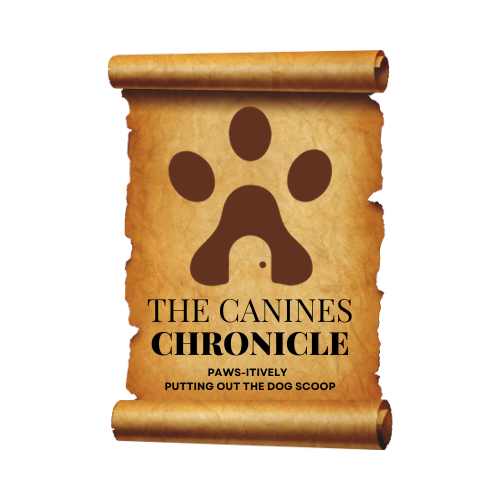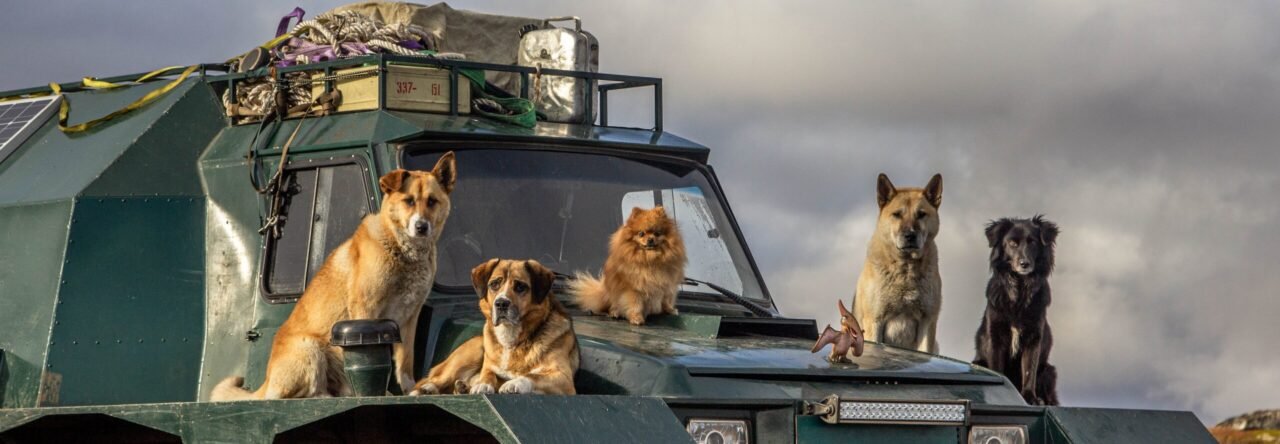I. Understanding Grain-Free Diet for Dogs
1.1. Defining Grain-Free Diet: What Does it Mean for Dogs?
Now, let’s play a fun detective game of What’s in the Doggy Bag?. Picture this: A bag stamped with buzzwords like ‘grain-free’, ‘natural’, and ‘healthy.’ But what do those words really mean for good ol’ Bruno, your barking buddy? A grain-free diet, in the most crashed-down version, means food products that do not contain grains such as wheat, corn, rice, barley, oats, and so on. Okay, this cracked the code of what it ISN’T. So, what it IS? Simply put, grain-free diets are typically rich in proteins and animal fats.
1.2. The Evolution of Canine Diet: From Wild Carnivores to Domestic Omnivores
When we think of dogs back in their old wild days, a picture of a hungry wolf tearing into a fresh kill comes to mind, the grains like wheat or barley were nowhere in sight. Our domesticated canines descended from these wild wolves. But, much like your cousin twice removed, though there are shared chunks of DNA, they aren’t the same entity—neither in habits nor diets. Over time, like their human companions’ diets, dogs’ meals have also encompassed a wider range of food groups, including grains.
1.3. Claims and Controversies of Grain-Free Dog Food
Now, let’s think of the grain-free diet as that trendy new diner everyone can’t stop talking about. Some swear it’s the best thing ever; others mutter about it being all fluff and no meat. The proponents of grain-free dog foods often cite improved digestion, better coat health, and fewer allergies as reasons to hop onto the bandwagon. Detractors, however, speak of potential health risks, like heart disease and nutritional imbalances.
II. Debunking Myths Surrounding Dogs and Grains
2.1. Dogs vs. Wolves: Dispelling the Ancestral Diet Myth
Here comes the big question, “Aren’t dogs supposed to eat like their wolf ancestors?”. Well, not exactly! Our domestic dogs have evolved dramatically from their ancestor wolves, both in behavior and metabolism. Dogs have developed a genetic adaptation to easily digest carbohydrates, including grains. So, using the ‘wolf card’ to justify a grain-free diet doesn’t pass muster.
2.2. The Canine Gluten Fallacy: Is Grain Intolerance In Dogs Real or Exaggerated?
Picture gluten as that guest everyone’s unsure about inviting, worried they might cause chaos! A common misconception is that dogs, like humans, can be gluten intolerant. The fact is that gluten-intolerance is exceptionally rare in dogs. Your buddy Bruno’s upset stomach might not be from the grains, after all!
2.3. Canine Diabetes: Is there a Relation Between Dog Diabetes and Grain Intake?
Every dog owner’s nightmare might be hearing the words “Your dog has diabetes.” Here, many fingers point toward grains. But, research shows that the increased carbohydrate content isn’t necessarily the culprit. Instead, factors like obesity and lack of exercise play a more significant role.
III. Merits of Grain-Free Diet in Dogs
3.1. Enhanced Digestibility: Why Digestion is Easier With Grain-Free Diets
The harmony of Bruno’s tummy playing the right notes is linked greatly to his diet. Grain-free diets with primary protein sources can be easier on the dog’s digestive system. After all, nobody wants a gassy or constipated Bruno!
3.2. Improved Coat and Skin Health: The Connection Between Grain-Free Diets and Canine Dermatology
Want Bruno to strut around the neighborhood with a gleaming coat and healthy skin? A grain-free diet could be the secret. These diets are often rich in Omega-6 and Omega-3 fatty acids, known to promote skin and coat health.
3.3. Weight Regulation: How Grain-Free Diets can aid in Maintaining Dog Weight
Hand on heart, no one likes to see Bruno struggling with his weight. It’s about maintaining that balance – not too skinny, and certainly not obese. Grain-free diets, generally high in protein and fiber, could potentially assist in keeping that dreaded doggy flab at bay.
IV. Potential Risks and Downside of Grain-Free Diets
4.1. The Heart of the Matter: Link Between Canine Heart Disease and Grain-Free Diets
This one hits right in the heart, literally. Some studies have suggested a potential link between grain-free diets and a specific type of heart disease in dogs called dilated cardiomyopathy (DCM). It’s still a contested territory in the science world though, not completely clear-cut.
4.2. Nutritional Imbalance: Are Grain-Free Diets Nutritionally Adequate for Dogs?
Just like you wouldn’t survive on cheeseburgers alone (no matter how much you wish you could), Bruno needs a balanced diet. Exclusive grain-free diets may lack certain nutrients and could potentially lead to nutritional deficiencies.
4.3. Increase in Allergies: Can Grain-Free Diets Lead to Increased Canine Allergies?
Guess who showed up uninvited, yet again? Yep, Allergies! While grains are blamed for allergies, switching to a grain-free diet can still provoke food allergies in dogs. It is important to identify the real allergens before restructuring Bruno’s diet.
V. Choosing the Best Diet for Your Dog
5.1. Individual Dietary Needs: Tailoring Food to Your Dog’s Specifics
Just as no two human fingerprints match, Bruno’s dietary needs might vary from his park buddy Garfield. Age, breed, health conditions, and activity levels determine what Bruno should be gulping down.
5.2. Consulting Professionals: Why It’s Crucial to Talk to your Vet
Asking Dr. Google isn’t the smartest idea when it comes to your pooch’s diet. Always consult with a trusted vet before making any significant diet changes. Your vet will consider all of Bruno’s specifics that the internet just can’t.
5.3. Balancing Act: Incorporating Grains Strategically into Your Dog’s Diet
With grains, it’s about balancing quantity and quality. When chosen correctly and used moderately, grains can contribute valuable nutrients to a dog’s diet. Yeah! It’s a classic case of ‘too much of anything is bad.’
VI. Summary: Weighing the Pros and Cons of Grain-Free Diets for Dogs
VI.1. Summary of the key findings
Now we’ve chewed the bones of grain-free diets for dogs. It’s not entirely angelic nor wholly demonic. While it has perks like enhanced digestibility, skin health, and potential weight control, it’s not free from potential pitfalls – possible heart damage, nutritional imbalance, and even allergies.
VI.2. Concluding remarks on the balance between grain-free and grain-inclusive diets
The choice is not as simple as a ‘yes’ or a ‘no’. It’s not about pegging grain-free against grain diets. It’s more about finding the sweet spot that aligns with Bruno’s specific needs.
VI.3. Final advice for dog owners
When it comes to Bruno, remember to consult the professionals, observe his health, and plan his diet accordingly. It’s not about the latest trends but what’s best for your furry best friend.
VII. Frequently Asked Questions
VII.1. Which dogs benefit most from grain-free diets?
Dogs with certain allergies or intolerances might benefit the most from grain-free diets. Always consult with a vet before making dietary changes though.
VII.2. What are the alternatives to a grain-free diet?
Whole-grain diets or diets that incorporate both grains and other nutrient-rich foods can be an excellent alternative. It’s all about finding the right mix.
VII.3. How can I transition my dog to a grain-free diet safely?
Slow and steady wins the race! Start by gradually mixing the new food with the old, slowly increasing the proportion until completely switched over. And let’s not forget, under the watchful eye of a trusted vet!
Here are a few brands that carry grain and filler free dog food
Taste of the wild, Merrick, Blue Buffalo Wilderness, Wellness Core, Canidae Pure, Nutro Ultra, and my favorite Orijen.
Orijen’s grain-free recipe with omega fatty acids helped clear up my dog’s troublesome skin issues. Since switching to Orijen, his coat is soft and he no longer gets painful abscesses on his body and ears.
So there you have it, all about grain-free diets from farm to Fido! Remember, it’s not about putting grains on trial; it’s tailoring what goes into Bruno’s bowl to what Bruno really needs!


Leave a Reply